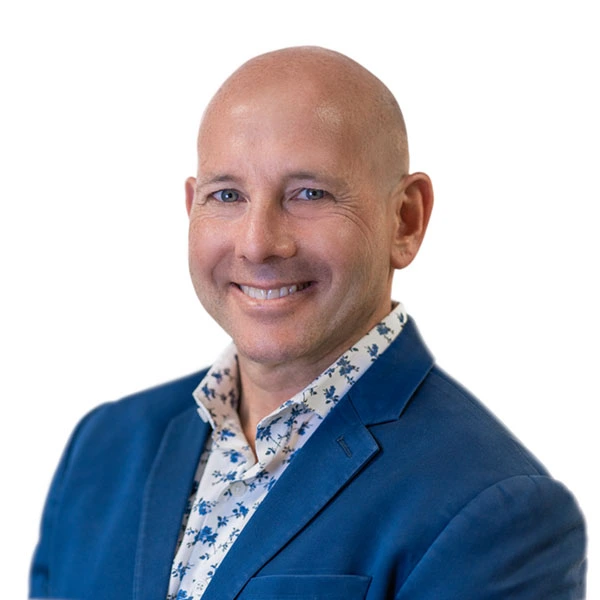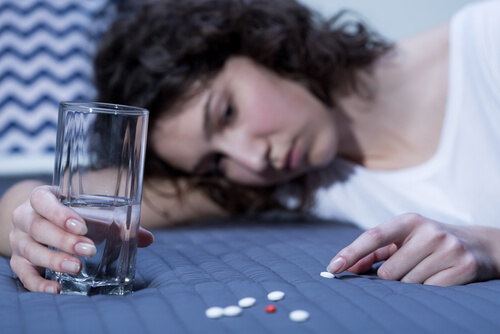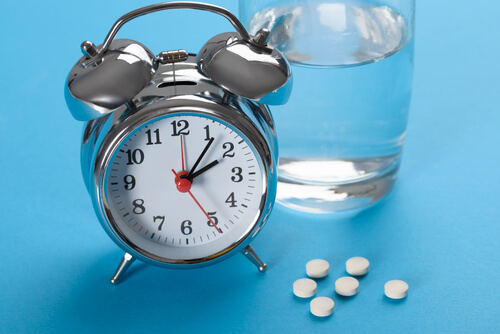Tranquilizers are among the most commonly abused prescription medications. They are not a drug class in and of themselves, but rather tranquilizer drugs encompass many other drug classes. It is important that users are aware of what tranquilizers for humans are and what risks they carry.
Learn About Tranquilizers Addiction:
- What Are Tranquilizers?
- What Are Their Types?
- How Do They Work?
- What Are Tranquilizers Uses?
- What Are The Methods Of Intake?
- What Are The Side Effects Of Tranquilizers?
- Can One Mix Tranquilizers And Alcohol?
- Can One Get High On Them?
- What Is Abuse Of Tranquilizers?
- Are They Addictive?
- What Are Withdrawal Symptoms?
- Can One Overdose On Tranquilizers?
- What Are OTC Tranquilizers?

What Are Tranquilizers?
The term tranquilizer is often used as if it were an official drug category. However, this is not the case. Instead, it is a more casual term that references any medication with a tranquilizing or sedating effect, reducing tension and anxiety in the person taking it. They come from many different drug classes, including benzodiazepines and barbiturates.
Street Names For Tranquilizers
As with many substances, human tranquilizers have street names that allow users, buyers, and sellers to reference them without making the topic clear to outsiders. Some street names for these medications include:
- Bars
- Candy
- Circles
- Downers
- Eggs
- Footballs
- Forget-Me Pill
- French Fries
- Handlebars
- Hulk
- Jellies
- K
- K-Pin
- La Rocha
- Ladders
- Lunch Money
- Mexican Valium
- Mind Eraser
- Moggies
- Pin
- Quaalude
- Roofies
- School Bus
- Sleepies
- Sleeping Pills
- Special K
- Super Valium
- Trangs
- Tranks
- Tranq
- Vallies
- Vals
- Vitamin K
- Vitamin V
- Zan
- Zan Bars
- Zannies
Some of these street names refer to specific tranquilizer drugs, while others reference them in general.
Are Tranquilizers Legal?
There are both illegal and legal tranquilizers. For example, Rohypnol is an illegal tranquilizing drug Due to its use in crimes and the existence of other, less dangerous drugs with the same therapeutic benefits, its use and importation is banned in the United States. Valium, on the other hand, is a legal tranquilizing medication.
However, being legal does not mean anyone is allowed to have and use a drug. The vast majority of tranquilizing drugs, save for a few natural products and supplements, are strictly prescription only.
The legal consequences of tranquilizer use without a valid prescription vary. All non-natural human tranquilizers are controlled substances. They range from Schedule I to Schedule V, meaning that some are considered low risk while others are fully illegal.
The legal consequences of possessing a banned or controlled drug without a prescription can result in multiple years in prison, large fines, or both. Supplying them to another person increases the potential sentence to as much as 14 years.
Even with a prescription, certain things can still result in prison time or fines, such as driving while on sedative medications. All users of these drugs need to be aware of the limitations and consequences of their use.
Tranquilizers For Sale
Because there are numerous tranquilizer drugs from various categories, the prices of these medications vary significantly and can change based on location, legality, current demand, and if a generic is available.
To put this into perspective, the popular tranquilizer Valium costs $171 for 30 5mg tablets from Rite Aid. The generic is sold by the same pharmacy for just $18. On the street, the same pills, generic or not, could cost over $200.
Buying tranquilizers with a prescription is generally cheaper and safer than buying them on the street. In many cases, it is more affordable to buy tranquilizers online than at a physical pharmacy. Users with a valid prescription have the option to shop around and look for coupons to get the best deal.
Types Of Tranquilizers
Tranquilizer classification can be broken down into two categories. The first is major tranquilizers, which are primarily antipsychotics. Minor tranquilizers are made up of sedative and depressant medications and can include benzodiazepines, barbiturates, sleep aids, and other medications that depress the central nervous system. These tend to be the most common tranquilizers. Of these two categories, minor tranquilizers have the highest potential for abuse and addiction.
Major Tranquilizers
- Butyrophenones
- Phenothiazines
- Piperazine compounds
- Piperidine compounds
- Thioxanthenes
Minor Tranquilizers
- Pentobarbital
- Alprazolam
- Chlordiazepoxide
- Diazepam
- Lorazepam
- Triazolam
- Eszopiclone
- Zaleplon
- Zolpidem
- Butalbital
- Primidone
How Do Tranquilizers Work?
How tranquilizers affect the body comes down to their mechanism of action. For the three main drug classes involving tranquilizing effect—barbiturates, benzodiazepines, and sleep medications—this mechanism of action is roughly the same.
What Do Tranquilizers Do?
Tranquilizing medications depress the central nervous system. While the specifics of the mechanism of action can vary—seeking out different GABA receptors, for example—minor tranquilizers for humans stimulate the inhibitory neurotransmitter GABA system, enhancing its effects. Major and minor tranquilizing drugs outside of the barbiturate, benzodiazepine, and sleep medication drug classes behave differently. Still, their ultimate effect is CNS depression.
How Long Do Tranquilizers Take To Work?
How long it takes for tranquilizers to work varies between medications, administration route, and the person taking them. In general, intramuscular drugs will take effect much sooner than those ingested orally. However, most people who take tranquilizing medications take them in pill form.
Butalbital is a barbiturate tranquilizing substance, and users can start feeling its effects within about 15 minutes. Diazepam, a benzodiazepine, takes roughly 30 minutes for its effects to be felt. Zolpidem, the well-known sleep medication Ambien, tends to give effects within 15 minutes or less.
What Are Tranquilizers Used For?
Tranquilizing substances were developed to meet specific medical needs. Broadly, these needs are the treatment of anxiety and tension. However, these can be broken down into more specific conditions that doctors might treat with these medications.
Medical Use Of Tranquilizers
Tranquilizer drugs can be used in the medical treatment of the following conditions:
- Anxiety
- Insomnia
- Psychosis
- Stress
- Intense fear
- Agitation
- Tension
- Muscle spasms
- Schizophrenia
- Mania
- Alcohol withdrawal
Tranquilizers used for anxiety tend to be the most common. However, tranquilizers for sleep are also widely used. Least common are tranquilizers used to treat psychosis.
These are all legitimate medical applications of the drugs. However, even when there is a need for treatment, tranquilizer abuse still occurs, and use should be monitored.
Illicit Use Of Tranquilizers
Because of their sedative effects, tranquilizing medications are often used illegally. This can be broken down into two categories: recreational use and as an agent to commit another criminal act.
When used recreationally, the person takes the tranquilizing drugs themselves to achieve a high. When used in a criminal act, the medication is given to a victim. This incapacitates them and often leaves them with fuzzy or missing memories, making them unable to identify who committed a crime against them, or even unable to realize that a crime has occurred. Both uses are illegal; however, using them to commit a crime against another person carries higher penalties.
Methods Of Intake
Different types of tranquilizers for humans have different methods of intake. The primary product forms are tablets, capsules, injections, and suppositories. Tablets and capsules are swallowed, injections are delivered to the muscles, usually in the buttock or upper arm, and suppositories are inserted into the anal cavity.
Tranquilizer pills are most common for at-home use, either in tablet or capsule form. Injectable tranquilizers for humans are rarely prescribed for at-home use, being mostly restricted to medical facilities.
Tablets and capsules come in a variety of shapes, sizes, colors, and markings, depending on the exact medication being used. Injectable tranquilizers are liquid and stored inside a sealed glass vial. Suppository tranquilizing drugs look much like any other type of suppositories—clear to white and shaped for easy insertion.
Side Effects Of Tranquilizers
No matter the type of tranquilizer drug used, there is the potential for side effects to emerge. These side effects tend to be more pronounced when the use of the medication is habitual or abusive. However, any user can experience these symptoms of use.
Tranquilizer side effects are highly varied. Short-term effects of tranquilizers end once use is stopped. However, the long-term effects of tranquilizers can last for life.
Anyone who is taking these medications needs to know what risks they face. The potential effects of tranquilizers can be devastating.
Physical Effects
- Disrupted sleep patterns
- Disorientation
- Restlessness in the muscles
- An inability to release tension in the body
- Sleepiness
- Sluggishness
- Respiratory distress or arrest
- Cardiac arrest
- Gastrointestinal distress
- Unconsciousness or sedation
Psychological Effects
- An inability to mentally relax
- Anxiety
- Paranoia attacks
- Shifts in personality
- Emergence of mood disorders
- Rage
- Aggression
- Dulled emotions
- Delusions
- Hallucinations
- Confusion
- Impaired judgement
- Memory loss
- Suicidal ideations
Social Effects
- Broken relationships with family and friends
- Struggles with engaging socially
- Isolation
- Difficulty maintain job performance
- Potential loss of employment
Ultimately, there are many unpleasant effects that can emerge from tranquilizing substances use. As such, whenever possible, these medications should be avoided.
Tranquilizers And Alcohol
Sometimes, users will be tempted to combine human tranquilizers and alcohol. With many medications, there is a risk when they are used at the same time as alcohol. However, with tranquilizer drugs, the risk is very high. This is even truer when one or both substances are being abused.
Tranquilizers and alcohol are both central nervous system depressants. The CNS is in charge of the functions that keep a person alive, including respiration and circulation. When its functions are depressed, it results in a body that is not working effectively to keep a person alive. In some cases, these vital functions can cease completely, and the person can die.
The risks are present with all types of drugs, which means the combination of major tranquilizers and alcohol is just as bad as the combination with minor tranquilizing drugs. Anyone taking these medications should avoid drinking alcoholic beverages.
Tranquilizer High
Tranquilizers for humans can produce a high, even when they are taken at the prescribed dose by someone with a valid need. When taken correctly, this high should be minimal. However, even this minimal sensation can encourage abuse and addiction.
The high of these drugs cause can be described in various ways, given the different medications can have different effects. In general, the high is noted for significantly reducing or eliminating feelings of anxiety and heavily increasing the sensation of general well-being. It usually accompanies the feeling of the body being fully relaxed and a dream-like mental state. Users also tend to report lowered inhibition and having the sense that they can safely and successfully do things they would otherwise recognize as dangerous.
For some, the high these medications produce is undesirable and little more than a side effect. For others, it fuels their abuse of prescription tranquilizing medications.
Abuse Of Tranquilizers
The tranquilizers people abuse tend to be the ones that deliver the most powerful high. However, there is potential for abuse with all types of these medications. Abuse of prescription tranquilizers is widespread, and awareness is vital to curbing it.
Why People Abuse Tranquilizing medications
There is no one answer to why people might turn to tranquilizer abuse:
- For some, it begins with a conscious effort to engage in abuse, seeking out the medication to get high.
- For others, they begin using the medication as directed, and when the effects start to lessen, they increase their dose on their own, eventually finding themselves addicted.
Ultimately, what drives abuse are the effects the medications produce. Either the person enjoys them and wishes to experience them, or their body becomes dependent upon the medications, and they are physically driven to use.
How People Abuse Tranquilizers
There isn’t a signal path towards tranquilizing drugs abuse. Likewise, there isn’t just one way to abuse them:
- Some users will abuse the medications by taking them in their pill form but taking them in higher doses.
- Others will crush or melt the pills and turn them into a liquid form to inject.
- Some might opt to snort them or smoke them.
- Users may also combine them with other substances, such as heroin, to potentiate the high they deliver.
Ultimately, tranquilizer abuse is incredibly dangerous in any form. However, injecting, snorting, or smoking the medications comes with additional risks. For example, the chalk in tablets can lead to collapsed veins, which can result in the loss of limbs and the gel of capsules can resolidify in the body, blocking air and blood flow depending on how it was ingested.
Signs And Symptoms Of Abuse
If someone is concerned that a loved one might be abusing tranquilizing medications, they can look for signs and symptoms of abuse. While these are not guaranteed to be present in all cases, and they are not a definitive way to diagnose abuse, they still can help concerned parties take action and help those they care about.
Some potential signs and symptoms of tranquilizers abuse are:
- Increased sleepiness
- Struggles staying awake during normal waking hours
- Shaky hands
- Difficulty concentrating
- Struggles with holding a conversation
- A preoccupation with medications
- Switching to a new social circle
- Struggles with breathing
- Memory loss or confusion
- Dulled emotional responses
- Dizziness, Nausea
If any of these signs are noticed, it is a good idea to open up a line of conversation with the individual and possibly urge them to seek substance treatment if it is determined that abuse is indeed occurring.
Are Tranquilizers Addictive?
While not every type of tranquilizing drugs is considered addictive, the vast majority are. Nearly 3 percent of Americans engage in the non-medical use of tranquilizing medications every year. Out of those users, nearly 10 percent meet the criteria of addiction.
The addiction potential of tranquilizers varies. For example, drugs that are Schedule V are considered to have a very small potential for abuse and addiction; those that are Schedule I have such a high potential for abuse and addiction that any therapeutic benefits they have are outweighed by their risks.
What causes addiction to tranquilizers depends on the user and the medication taken. Tranquilizing medications have the ability to produce a high that can be quite desirable to some. They can start to feel mentally dependent upon experiencing this high, not feeling well, or like themselves without it. As they become driven to chase this high regularly, they become addicted.
Withdrawal Symptoms And Treatment For Tranquilizers
Once someone is physically addicted to tranquilizing medications, they will go through withdrawal when they stop taking them. This is most likely to be experienced by those who abuse the medications, but even those who engage in strictly medical use can end up experiencing withdrawals.
Tranquilizer withdrawal symptoms include:
- Seizures
- Shakiness
- Convulsions
- Insomnia
- Psychotic episodes
- Anxiety
- Chills
- Hot flashes
- Loss of appetite
- Night sweats
- Rapid breathing
- Rapid heartbeat
- Confusion, altered reality
- Muscle aches
- Irritability, Rage
Because withdrawal from tranquilizing drugs has the potential to be deadly, it must be done under medical supervision. Once the user has successfully withdrawn from the medication of abuse, they can begin the detoxification process and work on therapies that will make it easier to stay clean in the future.
Overdose On Tranquilizers
Getting off tranquilizing drugs is not pleasant. However, continuing to abuse them has far worse consequences, including the potential for a tranquilizer overdose.
Can One Overdose On Tranquilizers?
There is the potential for overdose with all medications, including those considered safe enough to sell over-the-counter. However, the potential for overdose is especially high with tranquilizing medications. In fact, their ability to induce death is so potent that some of these medications are specifically used in lethal injections. An overdose can occur when too much is taken at once, doses are taken too close together, a fatal drug mix is used, or because the user’s body was simply unable to handle the medication.
Tranquilizers Overdose Symptoms
Overdose symptoms from tranquilizer drugs can vary but tend to include the following:
- Abnormally low blood pressure
- Abnormally low heart rate
- Agitation
- Altered mental status
- Amnesia
- Blurred vision or other visual impairments
- Cardiovascular arrest
- Coma
- Confusion
- Difficulty thinking and/or concentrating
- Dizziness
- Drowsiness or unresponsiveness
- Hallucinations
- Kidney failure
- Loss of consciousness
- Loss of coordination
- Paradoxical agitation
- Respiratory depression or the cessation of breathing
- Shock
- Slurred speech
- Unresponsiveness
If any of these symptoms are observed, medical help must be sought immediately through the emergency line or a nearby hospital.
Over The Counter Tranquilizers
In addition to prescription medications, there are OTC tranquilizers. These are natural tranquilizers that are generally, though not always, considered safe to use. Examples include:
- Kava
- Passion flower
- Valerian root
- Chamomile
- Lavender
- Lemon balm
- Melatonin
- Magnesium
- Glycine
It is important to note that just because herbal tranquilizers are considered natural and generally safe, that does not mean they should be used without supervision. All medications and supplements carry risks.
Ending Tranquilizer Use
When the use of tranquilizing medications transforms into abuse, it is time to get clean. However, this should not be done alone. For safe withdrawal and a better chance at ending use for life, users should enroll at a drug rehabilitation center.
Page Sources
- Becker W. C., Fiellin D. A., Desai R. A. Non-medical use, abuse and dependence on sedatives and tranquilizers among U.S. adults: psychiatric and socio-demographic correlates. Drug and Alcohol Dependence. 2007; 90(2-3): 280–287. doi:10.1016/j.drugalcdep.2007.04.009. https://www.ncbi.nlm.nih.gov/pmc/articles/PMC3745028/.
- Weaver M. F. Prescription Sedative Misuse and Abuse. Yale Journal of Biology and Medicine. 2015; 88(3): 247–256. https://www.ncbi.nlm.nih.gov/pmc/articles/PMC4553644/.
- Weathermon R., Crabb D. W. Alcohol and MedicationInteractions. Alcohol Research & Health. 1999; 23 (1): 40-54. https://pubs.niaaa.nih.gov/publications/arh23-1/40-54.pdf.

 Authored by
Authored by  Reviewed by
Reviewed by 




